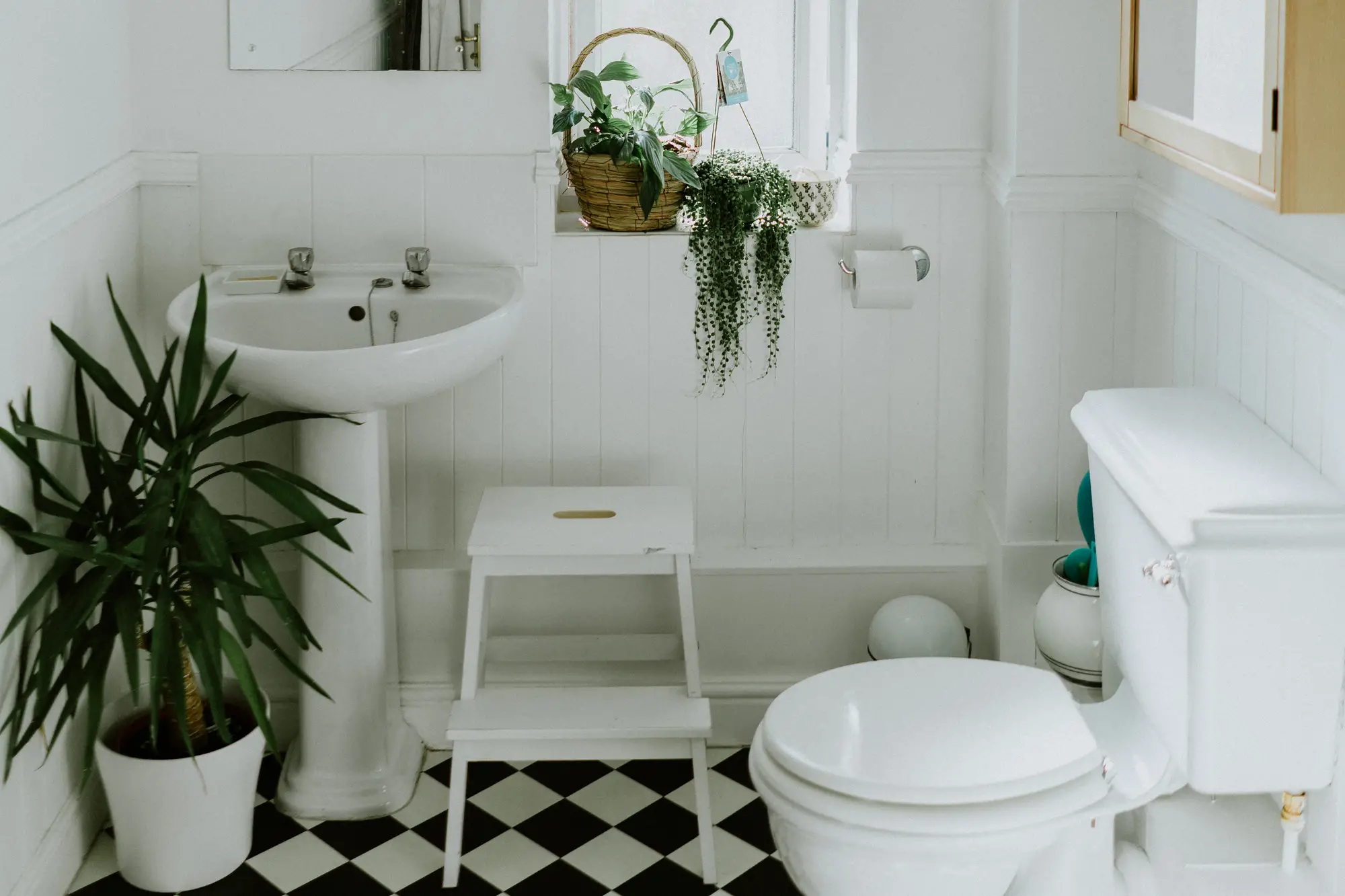If you are like me, you are always finding ways to add more plants to your collection. Bathrooms tend to receive less sunlight than other rooms in many homes, so it can be tricky to find the right plant for this environment. However, it is possible because the bathroom can be a great place to put plants that love humid environments.
If your bathroom does not receive very much sunlight, I strongly recommend adding some grow lights/artificial lighting. Otherwise, your plants will die. Even low-light plants need some light to photosynthesize.
Another benefit of keeping plants in your bathroom is that they improve air quality. To learn more about houseplants that improve air quality, check out this article that I wrote.
1. Snake Plant
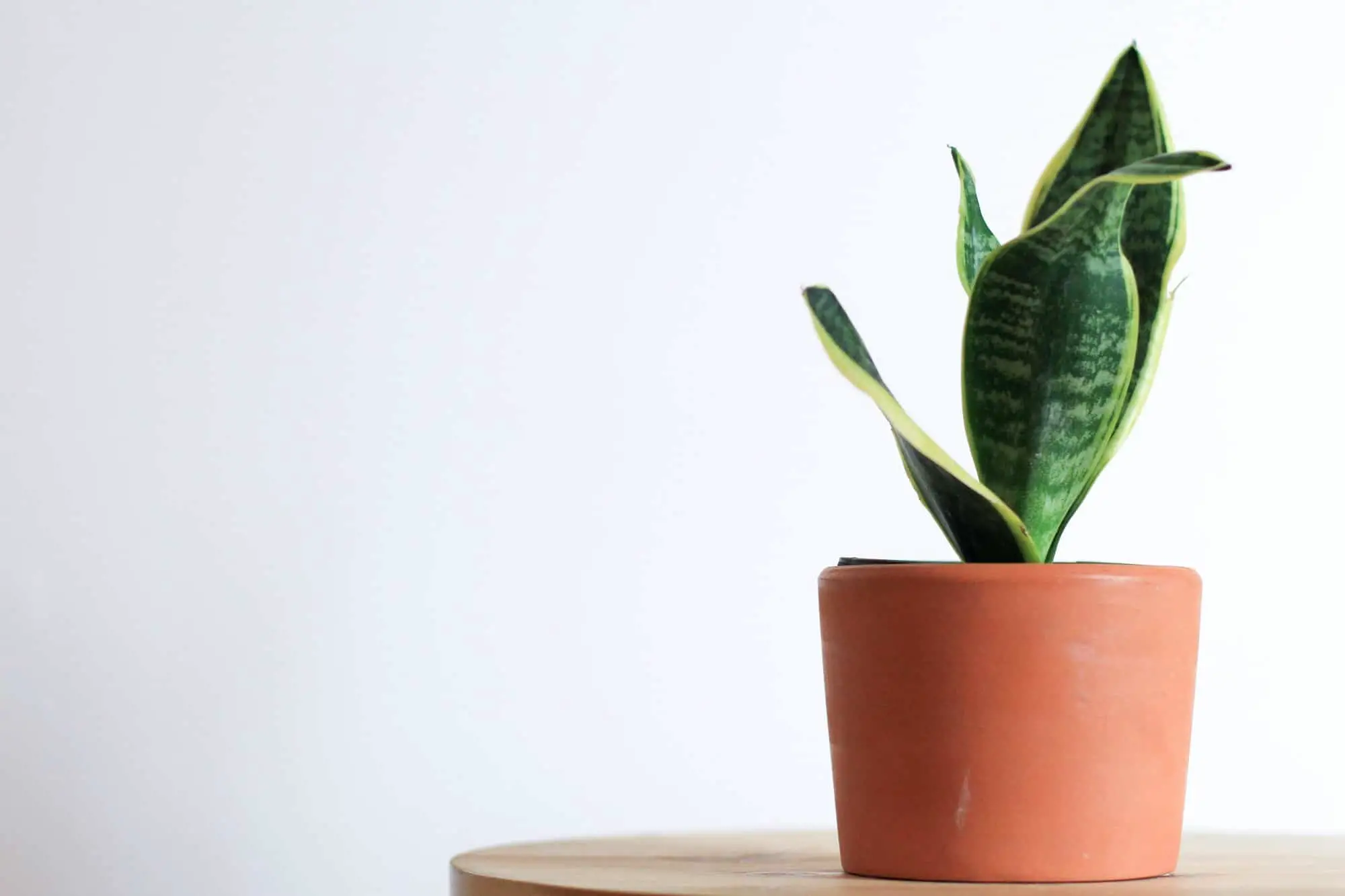
Dracaena trifasciata, which is commonly known as Snake Plant or Mother-in-Law’s tongue, is a popular houseplant that is well known for its hardiness and attractive leaf patterns. Because Snake Plant requires very little care and is tolerant of low-light conditions, it makes an ideal bathroom plant.
This plant has an extensive history, but it was not introduced to the Western World until fairly recently. Snake Plant was popular during Victorian times because it was one of the only houseplants that would grow in their dark homes. Snake Plant was introduced to the United States during the 1920s. During the 1930s, more than half of the Snake Plants grown in Florida were sent to Europe for distribution. Today, the United States gets most of its Snake Plants from Central America and the Caribbean Islands.
Snake Plant does not need to be watered very often. Only water your Snake Plant after allowing the top 2-3 inches of soil to dry completely. I water my Snake Plant every 2-3 weeks. Depending on the temperature and humidity of your home, you may need to water your Snake Plant more or less often. During the winter months, I water my Snake Plant even less frequently. Brown tips are a sign of underwatering.
The pot you use for your Snake Plant should be large enough to barely fit the root system. Snake Plants do better when they are potbound because this prevents root rot and overwatering.
To learn more about how to care for Snake Plant, click here to read this complete care guide for Snake Plant.
2. Aloe Vera
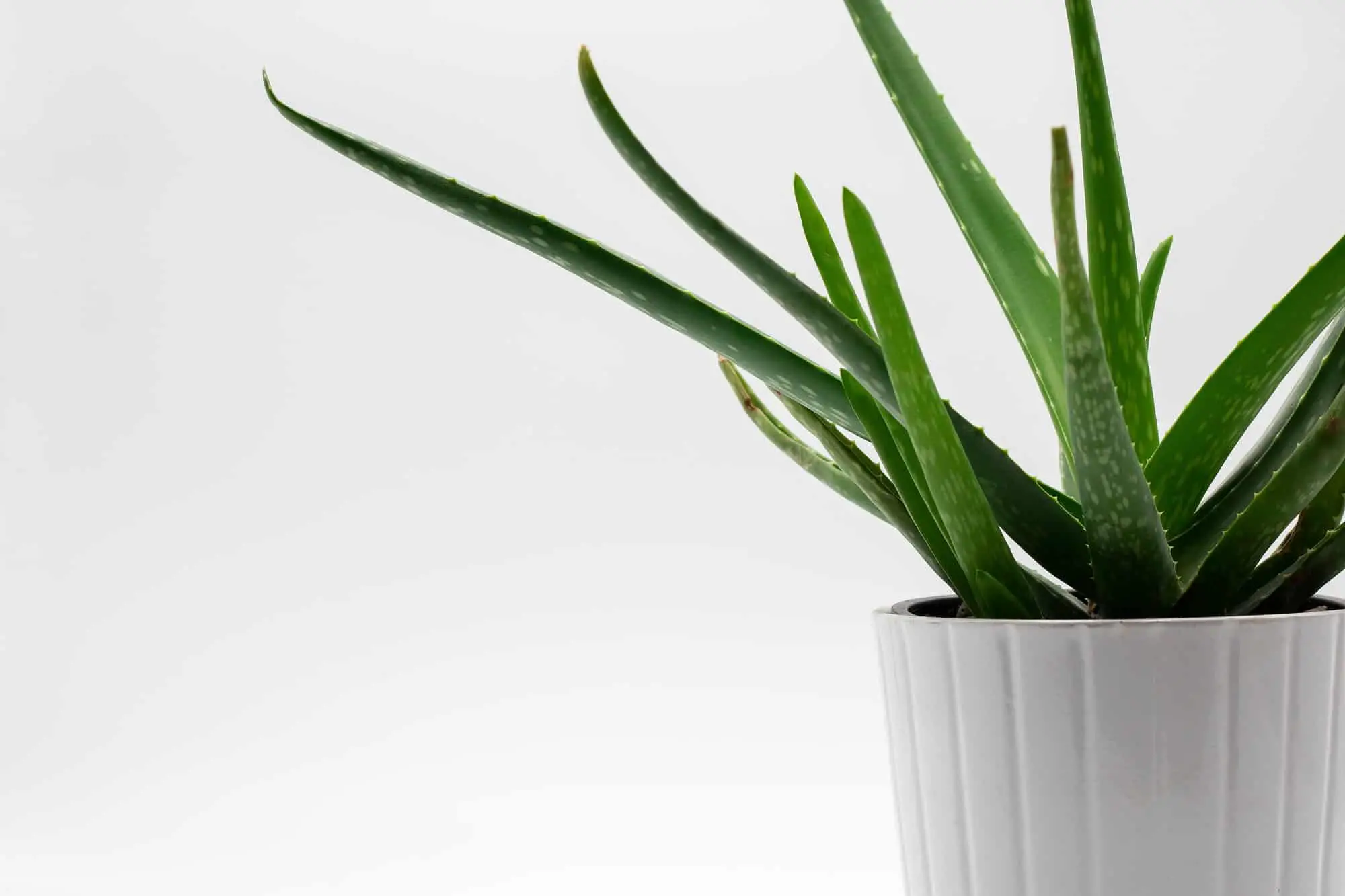
Aloe Vera is one of my favorite succulents. They look nice in pots or in hanging baskets. I like the idea of putting this plant in a bathroom because you could cut one of the leaves off to treat sunburns, but they would work well as a purely ornamental plant.
Aloe Vera does not require very much water to survive. The “soak and dry” method works well for this plant. The “soak and dry” method for watering involves watering the plant thoroughly then allowing the soil to completely dry out before watering again.
These plants will do well in a variety of lighting conditions. However, Aloe Vera does need access to some bright, indirect sunlight. For this reason, the Aloe Vera plant is not a good choice for bathrooms that do not have any windows. It is important to rotate your plant every two to three months to ensure the plant is receiving light evenly. Otherwise, your Aloe Vera plant will start leaning toward the light source.
Another benefit of Aloe Vera is that it improves air quality. A study conducted by researchers found that Aloe Vera effectively removes formaldehyde from the air (Yau et al. 2011).
3. Dragon Tree

Dracaena marginata, which is also known as Dragon Tree, is a great bathroom plant because it will tolerate low light levels and does well in humid environments. In addition, these plants live for several years with little maintenance. Because this plant is so hardy, Dragon Tree makes a great houseplant for beginners.
Dragon Tree is a member of the asparagus (Asparagaceae) family. It is native to Madagascar where they can grow up to 20 feet tall. In the wild, these plants will bloom tiny white flowers in the spring. After blooming, Dragon Tree will produce orange berries. Unfortunately, flowers and berries rarely appear on indoor plants.
Although this plant does well in a variety of light conditions, the leaves of the Dragon Tree will begin to lose its color if it does not receive enough light. Dragon Trees growing in low-light conditions will also not grow as quickly as those who are exposed to bright, indirect light.
Dragon Tree is a drought-tolerant plant. It is better to slightly underwater than to overwater these plants. To avoid overwatering, allow the top 2 inches of soil to dry out completely between waterings. Keep in mind that Dragon Trees living in low-light conditions need less water than those living in an area that gets more light.
4. ZZ Plant
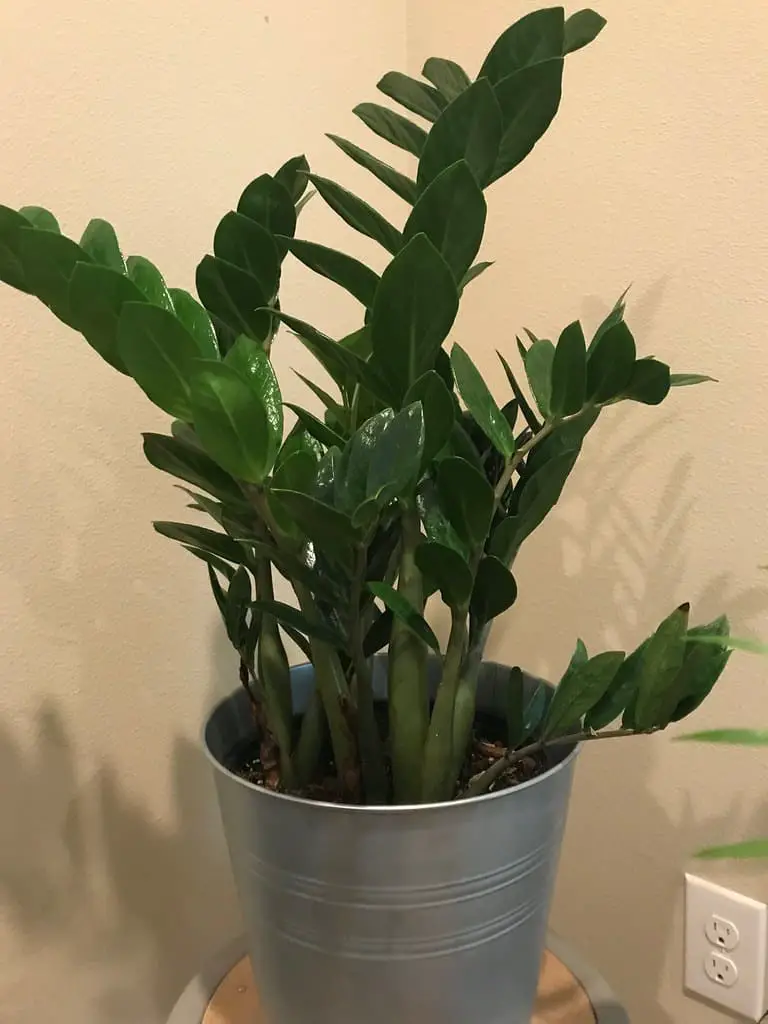
Zamioculcas zamiifolia, which is commonly known as ZZ Plant, is a popular houseplant that is native to the dry climates of Africa. They grow from large rhizomes. Rhizomes are underground stems that send out roots and shoots. ZZ Plant’s rhizomes store water which makes this plant very tolerant of drought conditions.
ZZ Plant is a great bathroom plant because it is extremely tolerant of low-light conditions, requires very little maintenance, and has attractive foliage that will brighten up any room.
As previously mentioned, these plants can survive in low-light conditions. Although it needs light to survive, it does not need much. There is a ZZ Plant growing in the middle of my engineering firm’s office, and it continues to look great even though it gets no sunlight, only incandescent office lighting.
ZZ Plant does not require very much water. Allow the soil to dry completely between waterings. If you are not confident in your watering judgment, it is best to err on the side of underwatering because these plants are very drought tolerant, but the rhizomes are very susceptible to rot.
Several years ago, there was a rumor going around that ZZ Plant causes cancer. Although these plants are mildly toxic if ingested, there is no evidence to show that they will cause cancer.
5. Monstera adansonii
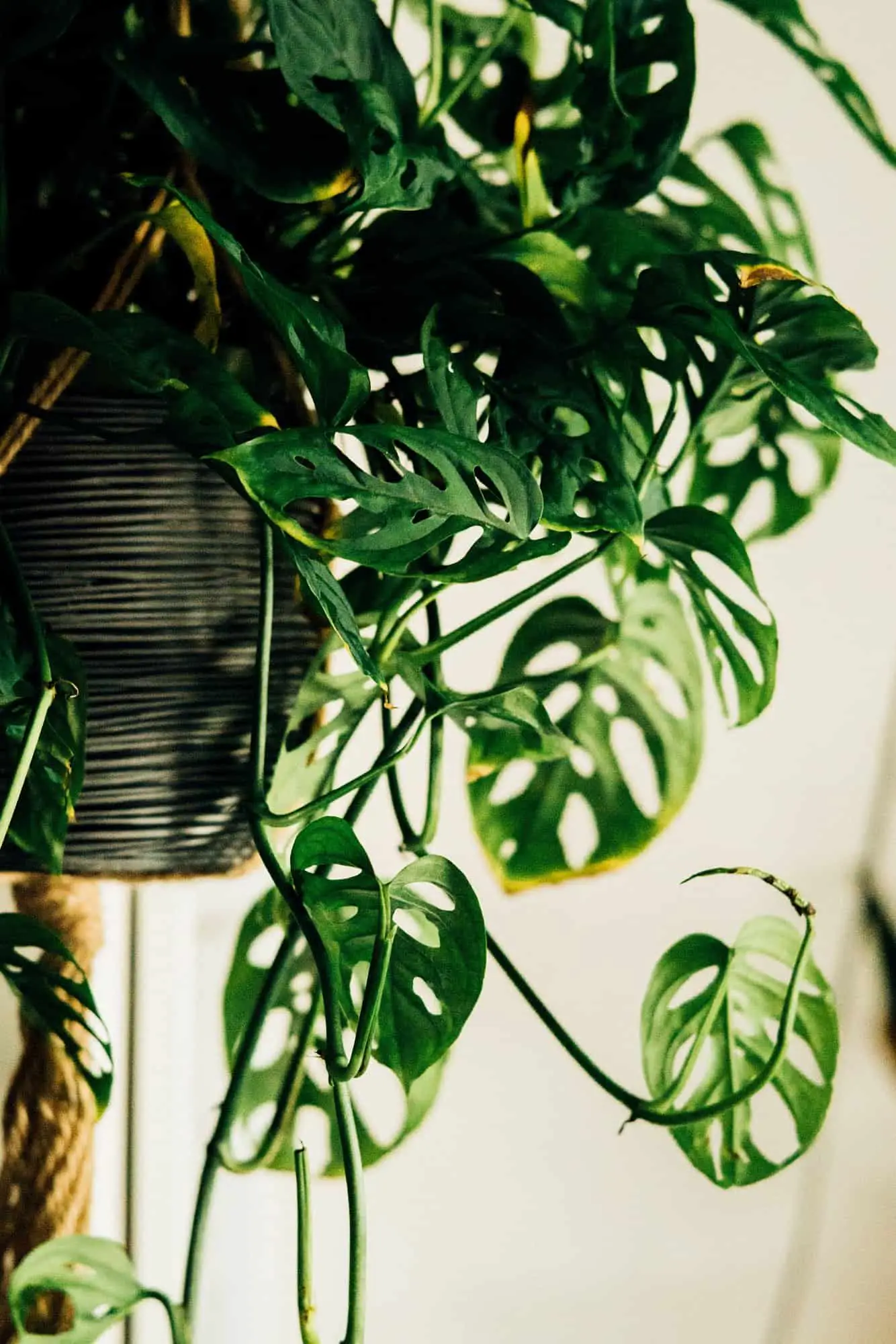
Monstera adansonii is a popular houseplant that is known for the holes in its leaves. It is in the same genus as the Monstera deliciosa, which is a larger plant. Because of these holes in the leaves, Monstera adansonii is one of the plants commonly referred to as Swiss Cheese Plant. Some of Monstera adansonii’s other nicknames include Adanson’s Monstera, Monkey Mask, and Five Holes Plant. Although this plant has a unique appearance, it is not a very fussy plant.
Monstera adansonii is a climbing plant that is native to the tropical forests of Central and South America. It is typically found in low elevation areas along river valleys. Although this plant is naturally a climbing plant, these plants can also be displayed as a hanging plant. However, Adansonii leaves can slowly atrophy away in hanging baskets if the plant is not pruned.
Although Monstera adansonii is relatively tolerant of a variety of light conditions, the leaves will not be as perforated if they do not receive enough light. Fortunately, fluorescent lights can provide the light that these plants need.
To learn more about how to care for Monstera adansonii, check out this care guide that I wrote.
6. Pothos
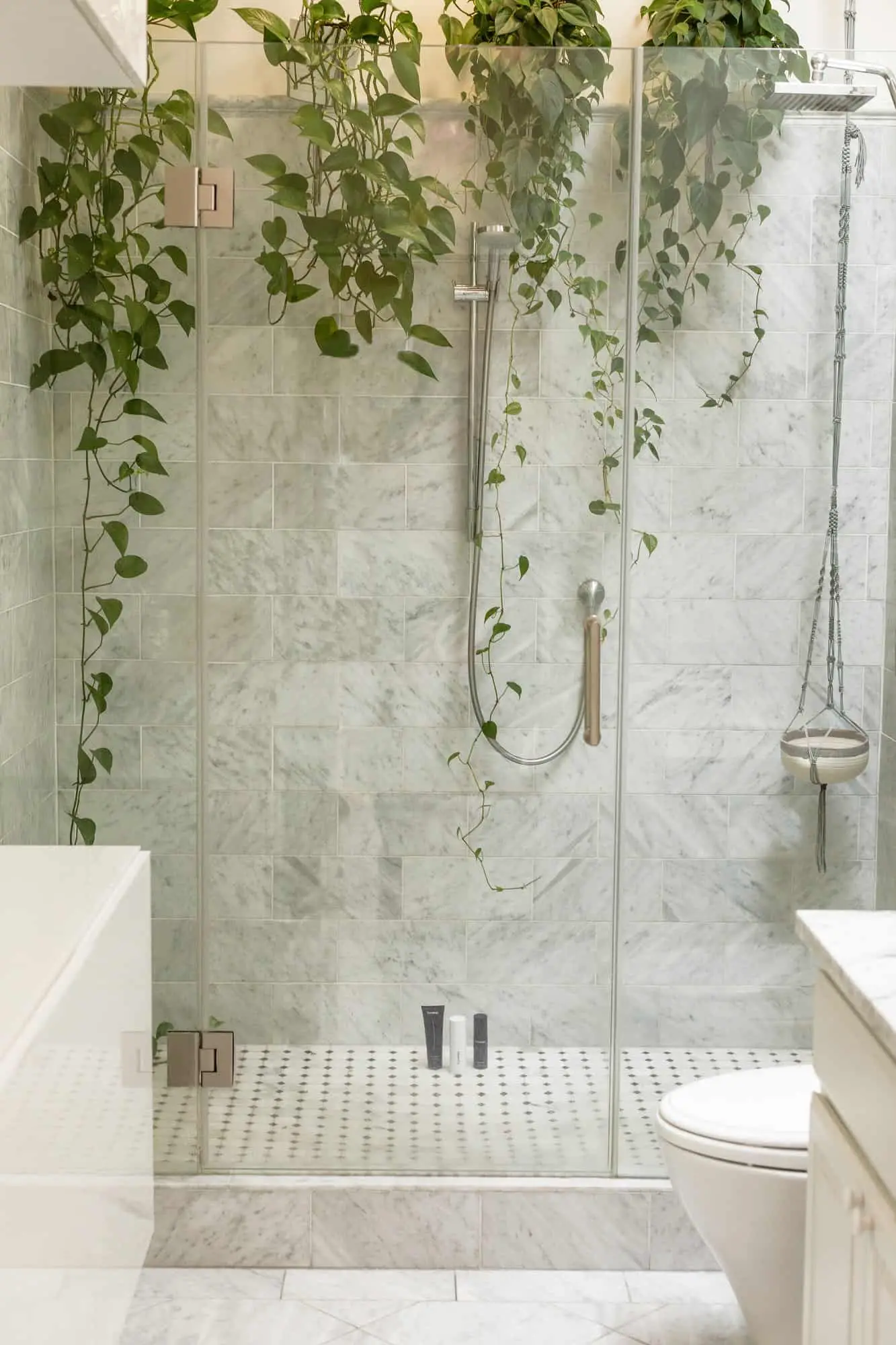
Epipremnum aureum, which is commonly known as Pothos even though it is no longer in the Pothos genus, is a type of plant in the arum family (Araceae). These plants are native to Mo’orea Island off the west coast of French Polynesia. However, they now grow naturally in India, China, Japan, Australia, Indonesia, and Hawaii. In the wild, Pothos climbs up trees by attaching itself to the trunk and branches with its aerial roots.
Pothos is probably the most popular houseplant available. In my opinion, this is because they are easy to grow, and these vine plants fit in with many types of decor. Pothos also make great additions to bathrooms because they can tolerate a wide range of lighting conditions, including low-light. However, variegated Pothos can lose their coloring if they are not getting enough light. Pale yellow leaves are a sign that your Pothos is getting too much light.
In addition to being tolerant of a variety of lighting conditions, Pothos is also drought tolerant. However, these plants do not like “wet feet.” To avoid overwatering, allow the soil to dry completely between watering. If the leaves become droopy or begin to wilt, your Pothos probably needs some water.
Pruning is necessary for your Pothos to keep its bushy appearance. Simply use sterilized shears to cut off stems that are “leggy.” This will encourage new growth to start branching out from the top of the plant. In addition, leafless vines should be pruned off as leafless vines typically won’t regrow.
You can always propagate your Pothos with the cuttings you’ve taken during pruning. Simply place your cutting in a vase of water, and roots will appear from the nodes within a month or two.
7. Air Plants
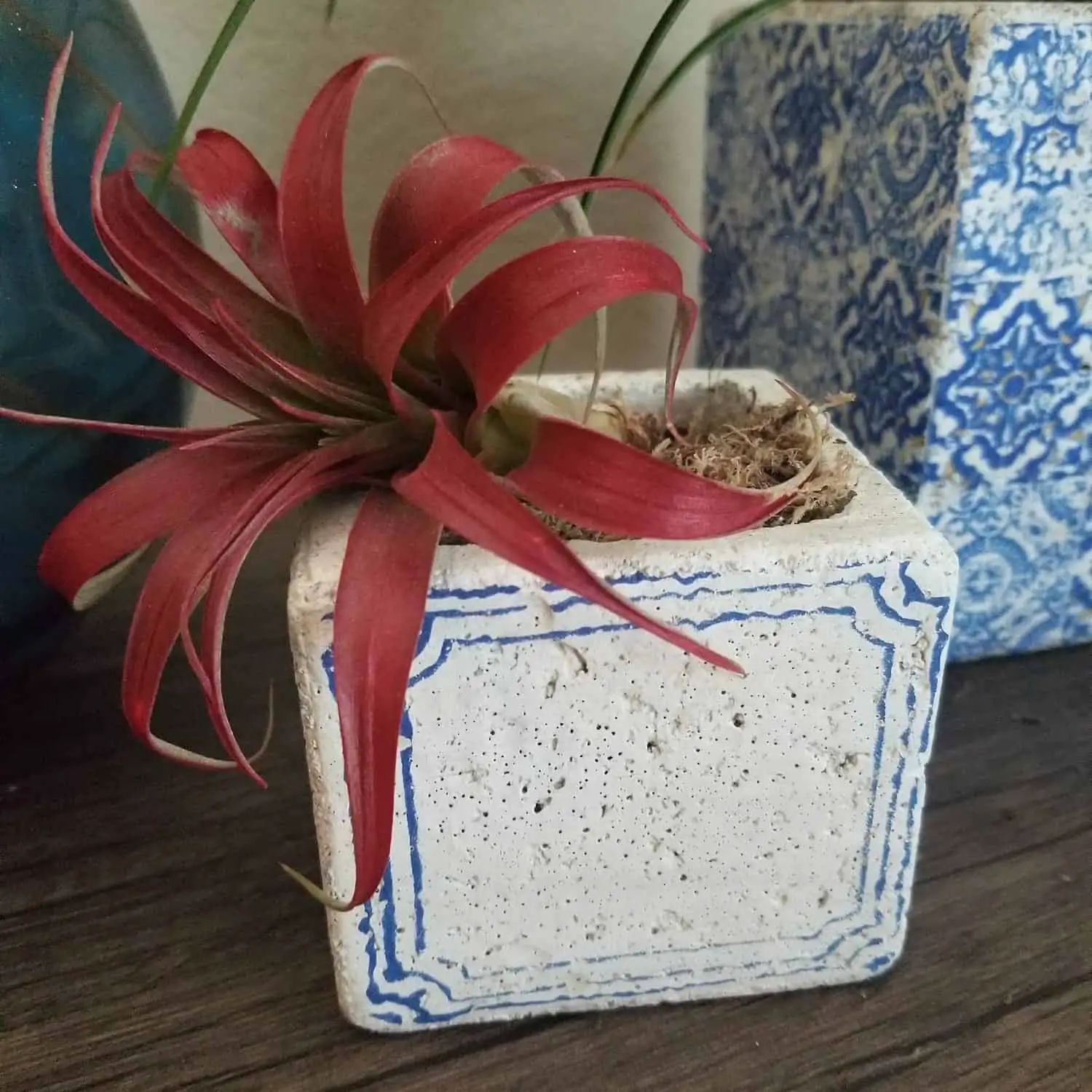
Tillandsias, which are commonly referred to as air plants, are another type of plant that will do well in a bathroom. However, not all air plants are well-suited for the humid environment of a bathroom. This is because some air plant species are native to drier environments while others come from more tropical climates.
Air plants are often categorized as Xeric, Mesic, or Hydric. Xeric is derived from the Greek word xeros which means dry. Xeric air plants grow in drier climates than Mesic air plants and Hydric air plants. Some of these air plants even grow in deserts and live as epiphytes on cacti. However, most Xeric air plants live in dry tropical forests.
Hydric air plants grow in water or very near water. These types of air plants are native to places with very wet climates like the Amazon River Delta. You will probably not find any Hydric air plants in stores because Hydric Tillandsias do not make good houseplants.
Mesic is derived from the Greek word mesos which means middle. Mesic air plants can be thought of as preferring wetter conditions than Xeric air plants and drier conditions than Hydric air plants. These are the types of air plants that will do best in a bathroom.
Unlike Xeric air plants, Mesic air plants are green rather than silver. The leaves of Mesic air plants tend to be thin and pliable with a tightly curled or cupped base. Some examples of air plants that will do well in a bathroom include:
- Tillandsia brachycaulos;
- Tilllandsia bulbosa;
- Tillandsia andreana;
- Tillandisa butzii; and,
- Tillandsia cyanea.
Xeric air plants would probably still do okay in a bathroom that does not contain a shower.
8. Spider Plant
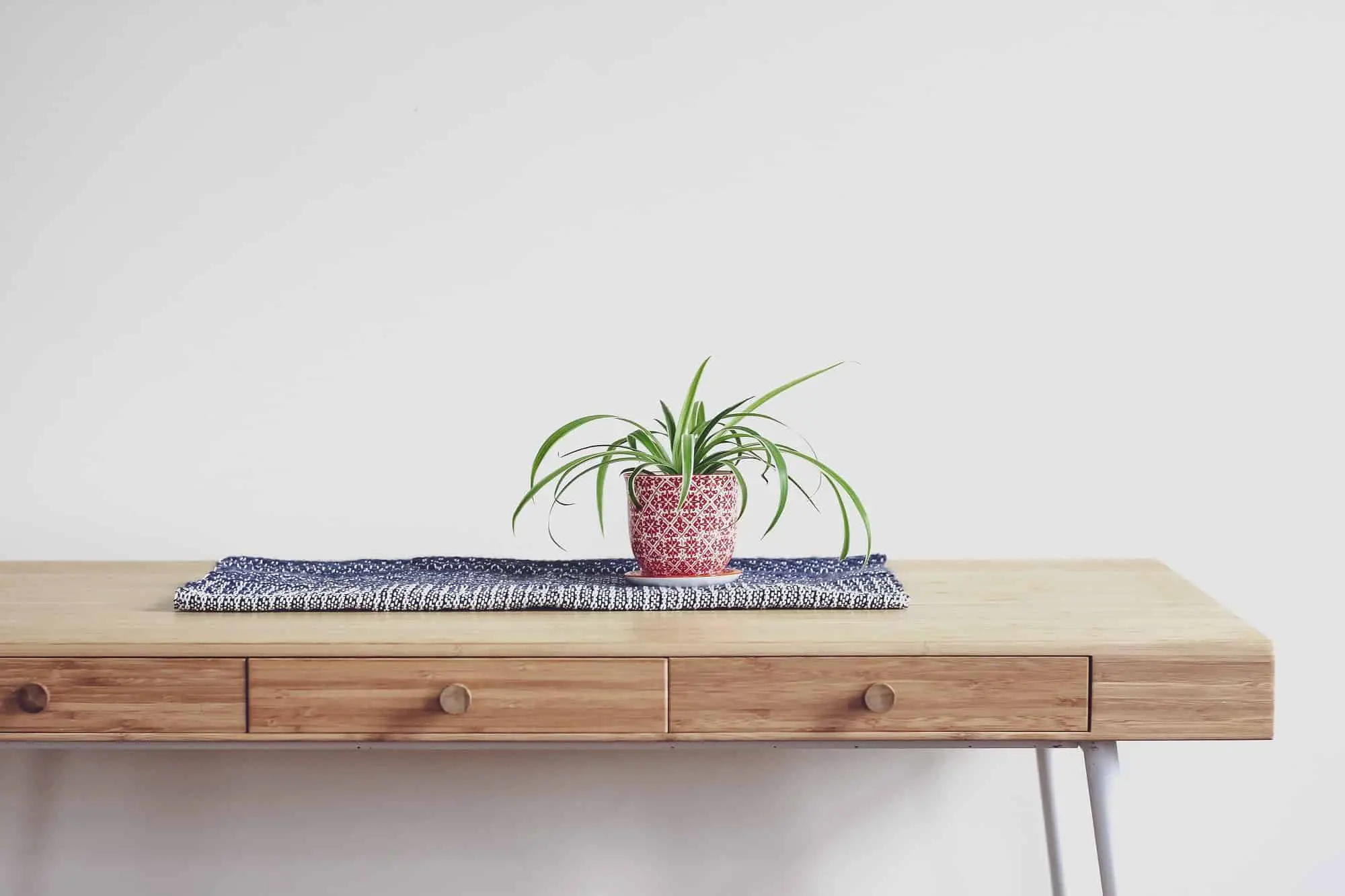
Chlorophytum comosum, which is commonly known as Spider Plant, is one of the easiest and adaptable houseplants to grow. For this reason, it is one of the most popular houseplants available. Spider Plants make good bathroom plants because they can adapt to a wide range of lighting conditions, and they do well in humid environments. Their leaves also look nice in a variety of pots and containers.
Spider Plant is native to the tropical regions of South Africa. It was first described by a Swedish botanist named Carl Peter Thunberg.
These plants are not very fussy when it comes to care. Spider Plant does grow fairly quickly and needs to be repotted about every two years. During the first year of the plant’s life, keep the soil evenly moist. This will encourage growth. After the plant has matured, allow the soil to dry out between waterings.
Like Pothos, Spider Plant will benefit from occasional pruning. Use sharp shears to remove any dead or diseased leaves. Make sure you cut foliage at the base of the plant.
You may notice that some of the Spider Plant leaves are browning. This is normal for Spider Plant, and brown leaf tips are usually not cause for concern. You can minimize the amount of browning by using filtered tap water or rainwater to water your plant as this will prevent mineral buildup in the soil.
9. Orchids
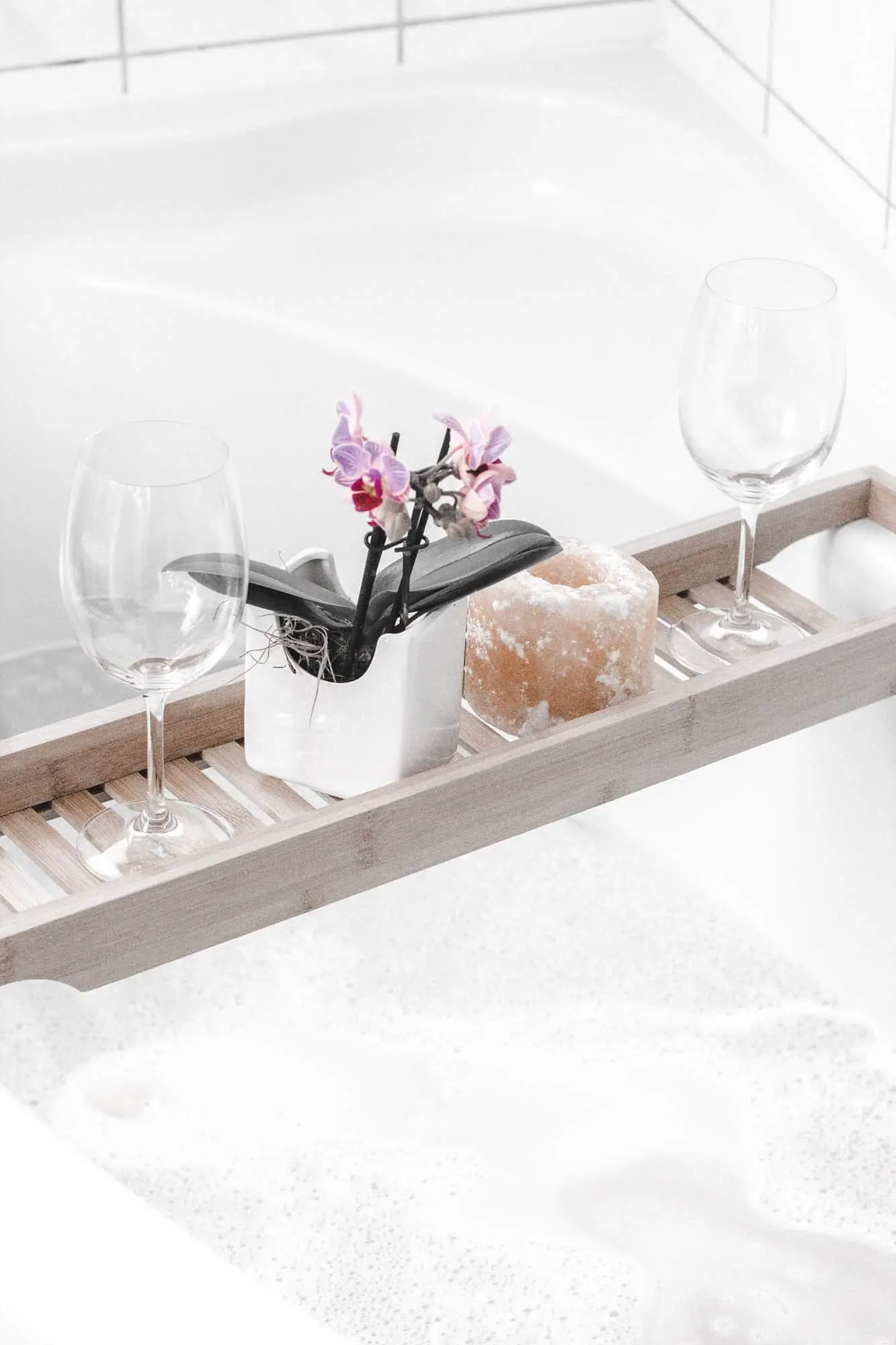
Although Orchids are a bit more temperamental than some of the other plants on this list, they are worth the extra effort! These plants are a beautiful addition to any bathroom. Orchids are also widely available are often sold in grocery stores.
The orchid family (Orchidaceae) is comprised of over 25,000 species of flowering plants making it one of the most diverse families of plants on Earth. The most common orchids found sold in stores are Phalaenopsis, Dendrobium, and Oncidium. The easiest type of orchid to grow is the Phalaenopsis. It is also the easiest orchid to get to rebloom.
According to the American Orchid Society, the best way to see if your orchid needs more water is to use the pencil trick. The pencil trick involves pushing the pointy end of a pencil into the growing medium. If the end of the pencil is dark due to the moisture in the growing medium, hold off on watering. If you aren’t sure whether you should water, wait one more day.
In the wild, orhids grow as epiphytes. This means they grow on trees rather than soil. For this reason, you should not repot your orchid into potting soil. It needs a growing medium that consists of bark. If you repot your orchid, always use an orchid mix.
Ideally, you should place your orchid near (not directly next to) a south-facing or east-facing window. If you place your orchid in a low-light bathroom, it will probably do okay (as long as it gets some light). However, do not expect it to bloom. The most common reason that orchids do not bloom is insufficient light.
10. Rubber Plant
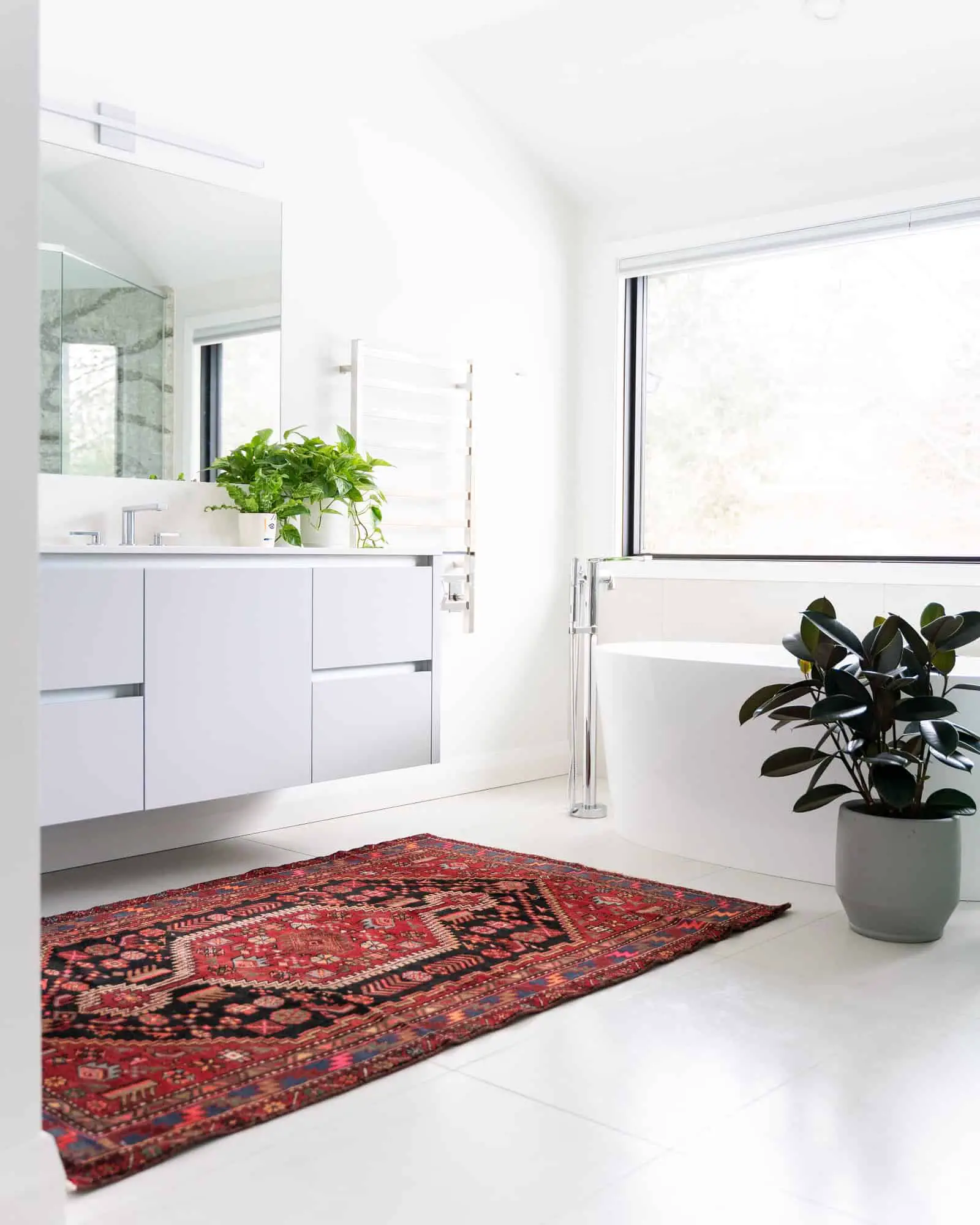
Ficus Elastica, which is commonly known as Rubber Plant, is a great bathroom plant because it does need a lot of light and will thrive in humid environments. In addition, its dark leaves contrast with light-colored bathrooms.
Rubber Plant is native to parts of South Asia. However, it has been naturalized in the West Indies, Sri Lanka, and parts of Florida.
Despite its name, Rubber Plant is not a major source of rubber. It was used to produce low-grade rubber in the past. However, the vast majority of the world’s Latex comes from Rubber Tree (Hevea brasiliensis).
Like every plant, Rubber Plant needs light to photosynthesize and survive. However, Rubber Plant will thrive in a wide range of lighting conditions. Rather than wilting, these plants will drop their leaves if they are not getting enough light. Do not place your Rubber Plant next to a window that is exposed to hot, direct sunlight. Hot sunlight can burn the leaves.
During the growing season (spring and summer), keep the soil moist. Decrease the amount of watering during the winter season. Yellow leaves are a sign of overwatering.
When watering your Rubber Plant, use lukewarm water. Cold water can shock the plant’s roots.
11. Ferns
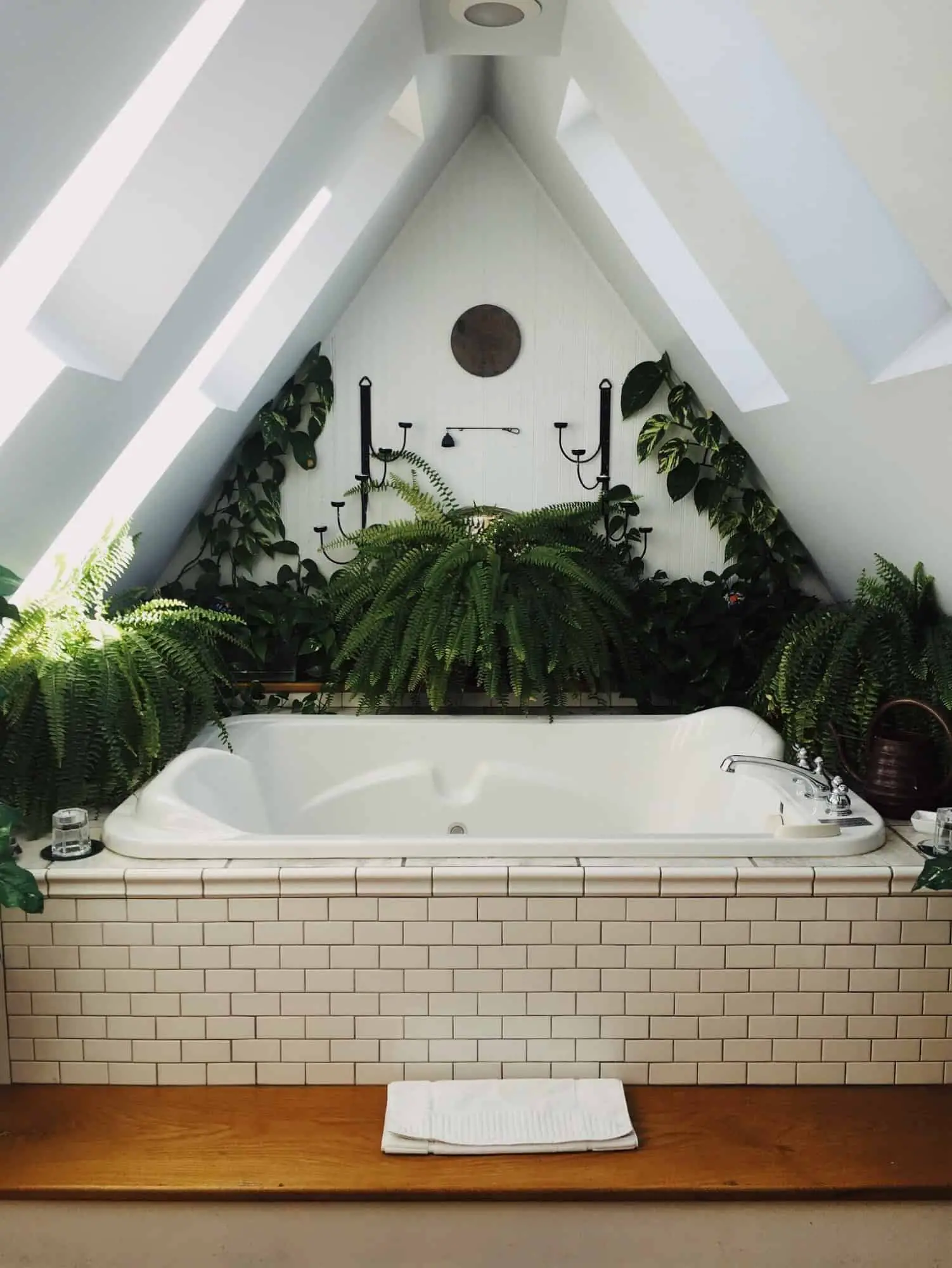
Ferns are great bathroom plants because they will do okay in low-light conditions and thrive in humid environments. Interestingly, ferns are among the oldest plants on Earth. Scientists have found fossils that indicate ferns have inhabited Earth for at least 380 million years (Taylor, Taylor, and Krings, 2009). This means that ferns inhabited Earth before the dinosaurs. Today, they are among the most diverse types of plants in the world.
Although ferns will survive in low-light conditions, they do best when exposed to bright, indirect light. If possible, place your fern a couple of feet away from a window. If your bathroom does not have a window, consider installing grow lights. Avoid placing your fern next to a vent or drafty window as these plants do not like temperature fluctuations.
Most ferns like for the soil to be evenly moist at all times. Allowing the soil to dry completely between waterings will cause the plant to be stressed. Adding moss around the base of the fern will help these plants retain moisture. To prevent root rot, make sure your fern is growing in well-draining soil.
Some types of ferns that do well in a bathroom include:
- Boston Fern
- Maidenhair Fern
- Silver Lace Fern
- Bird’s Nest Fern
- Staghorn Fern (epiphytic fern)
12. Lucky Bamboo
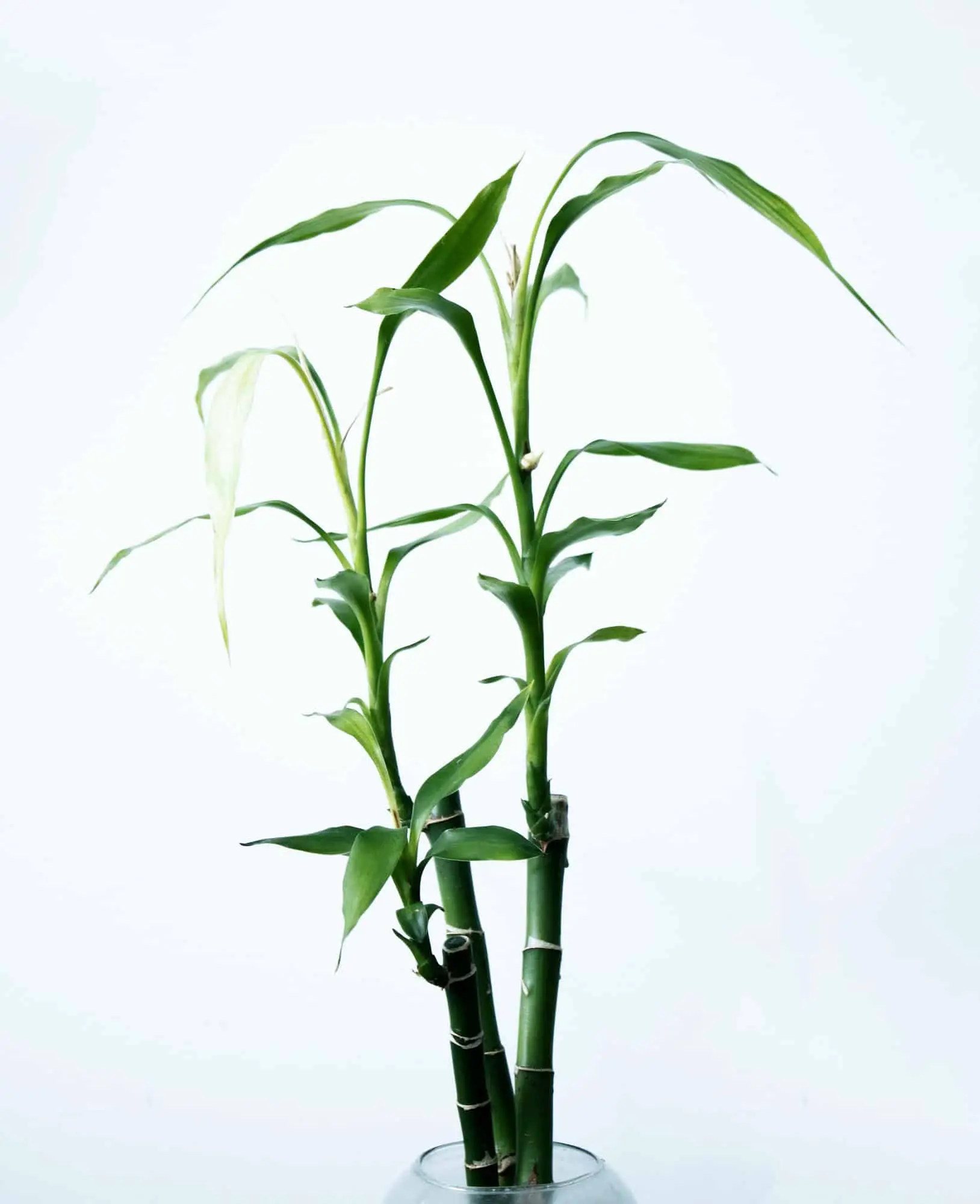
Dracaena sanderiana, which is commonly referred to as Lucky Bamboo, is another houseplant that tends to grow well in bathrooms. Despite its name, Lucky Bamboo is actually not bamboo. Although the stalks look like bamboo, this plant is more closely related to Dragon Tree (number 3 on this list).
Lucky Bamboo is native to Cameroon in West Africa and has no real ties to Asian culture. This plant can be grown in soil or hydroponically (in water). Lucky Bamboo is often sold in interesting containers, and the stalks tend to be bent into curly shapes.
In addition to their interesting appearance, this plant’s ability to live in low-light conditions makes it an excellent bathroom plant. Like all plants, Lucky Bamboo does need some light to survive, but it will continue to survive if it receives just a couple of hours of light each day.
If you are growing this plant hydroponically, change the water every week or two. If you want to keep your Lucky Bamboo alive for a long time, make sure you are using filtered water or rainwater. Over time, these plants can become sensitive to the chlorine and mineral content of tap water.
In general, you do not need to repot Lucky Bamboo or fertilize it. If you are growing Lucky Bamboo hydroponically, consider moving it to a larger vase if the roots get too crowded.
13. Money Tree

Money Tree is a beautiful, hardy plant that you can purchase almost anywhere. They typically come in fun containers and have a modern aesthetic. These plants thrive in humid environments which makes them a great plant for bathrooms.
Money Tree is actually multiple Pachira aquatica plants braided together. These braided trees typically come in sizes ranging from 1 to 6 feet. In the wild, Pachira aquatica can grow to a height of almost 60 feet!
Although you may expect these trees to have a history that dates back centuries, the first Money Tree was cultivated in Taiwan in the 1980s. Since that time, these plants have surged in popularity.
Money Tree is not very fussy and does not require extensive care. Allow the soil to completely dry out between waterings and place your Money Tree in a location that receives bright, indirect sunlight.
Over time, some of the leaves on your Money Tree will die. This is completely normal. Simply prune off the dead leaves to encourage continued growth. These plants do not require a lot of fertilizer, but they do look best when fertilized 1-2 times each year during the growing season (late spring through summer).
Overwatering is the most common killer of these plants. Excessive watering can cause root rot. Signs of root rot include drooping or yellowing leaves and a generally unhealthy appearance. Eventually, the trunk will become mushy, and the plant will die. If you do find that one of the Pachira aquatica plants is rotting, carefully unbraid your Money Tree and remove the rotting plant. This will prevent any diseases from spreading.
14. Prayer Plant
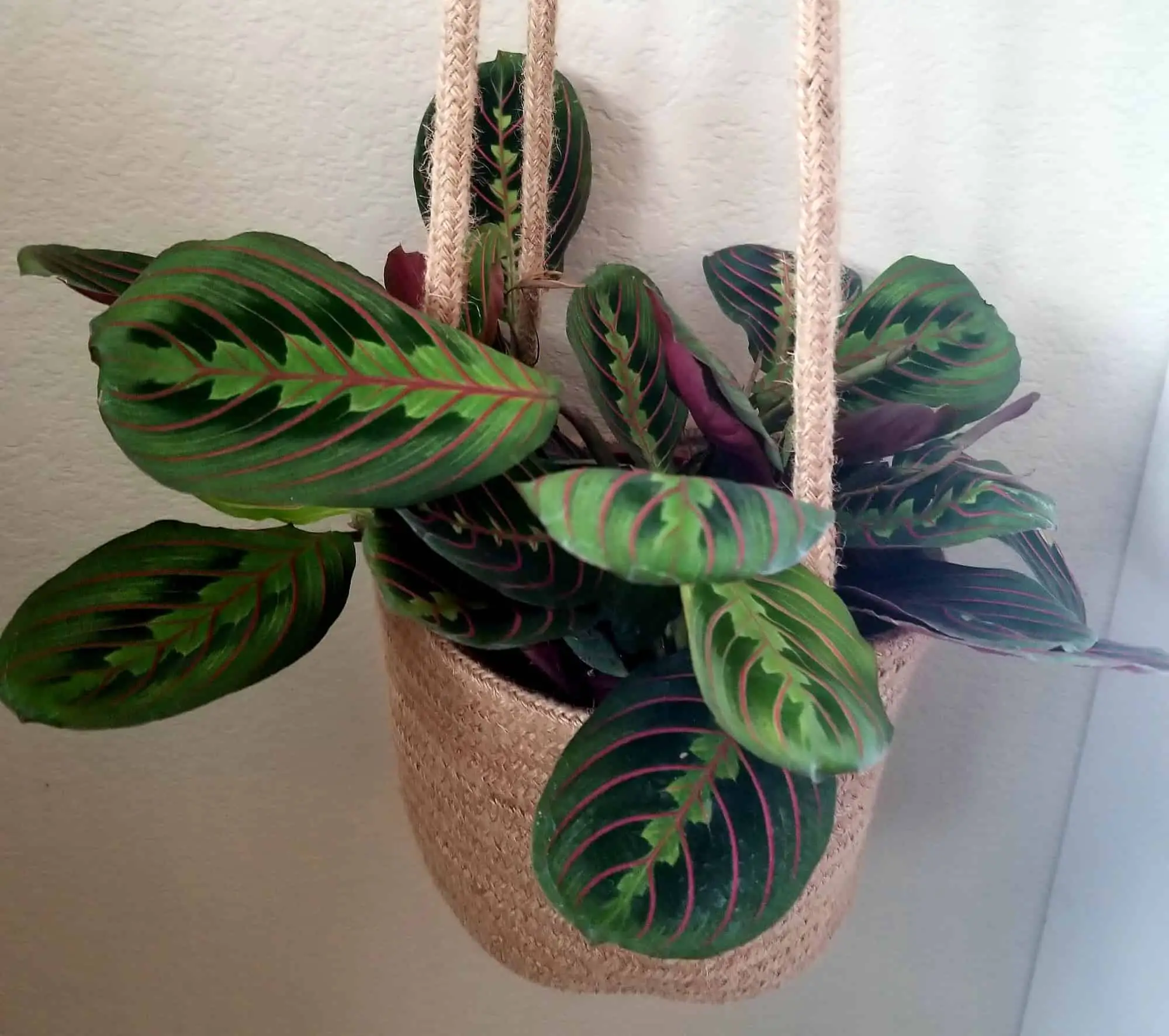
Maranta leuconeura, commonly known as Prayer Plant is a species within the Marantaceae family. Within the Marantaceae family, it is a part of the Maranta genus. This genus is named for Bartolomeo Maranta, an Italian botanist and physician during the 16th century.
Prayer Plant gets its name from a behavior called nyctinasty. The term nyctinasty describes a behavior where the plant moves in response to light or darkness.
Prayer Plant will grow best when it is exposed to 4-6 hours of indirect light each day. Ideally, you should place these plants in a spot that is 5-10 feet from a window that receives a lot of sunlight. This is perfect for many bathrooms. These plants definitely do not belong on a window sill. Avoid putting your Prayer Plant in an area that is exposed to hot, direct sunlight. Too much light will cause the leaves’ colors to fade. Curling leaves is another sign that your Prayer Plant may be getting too much light.
These plants do best when the soil is evenly moist but not soggy all of the time. It is important to note that Prayer Plant is particularly sensitive to the chemicals (i.e., chlorine, fluoride, or minerals) present in many people’s tap water. For this reason, you should use filtered water or rainwater to water your Prayer Plant. If you own a water softener, it is especially important to make sure you are using water from a spigot that is not connected to the softener to water your plants.
15. Zebra Cactus
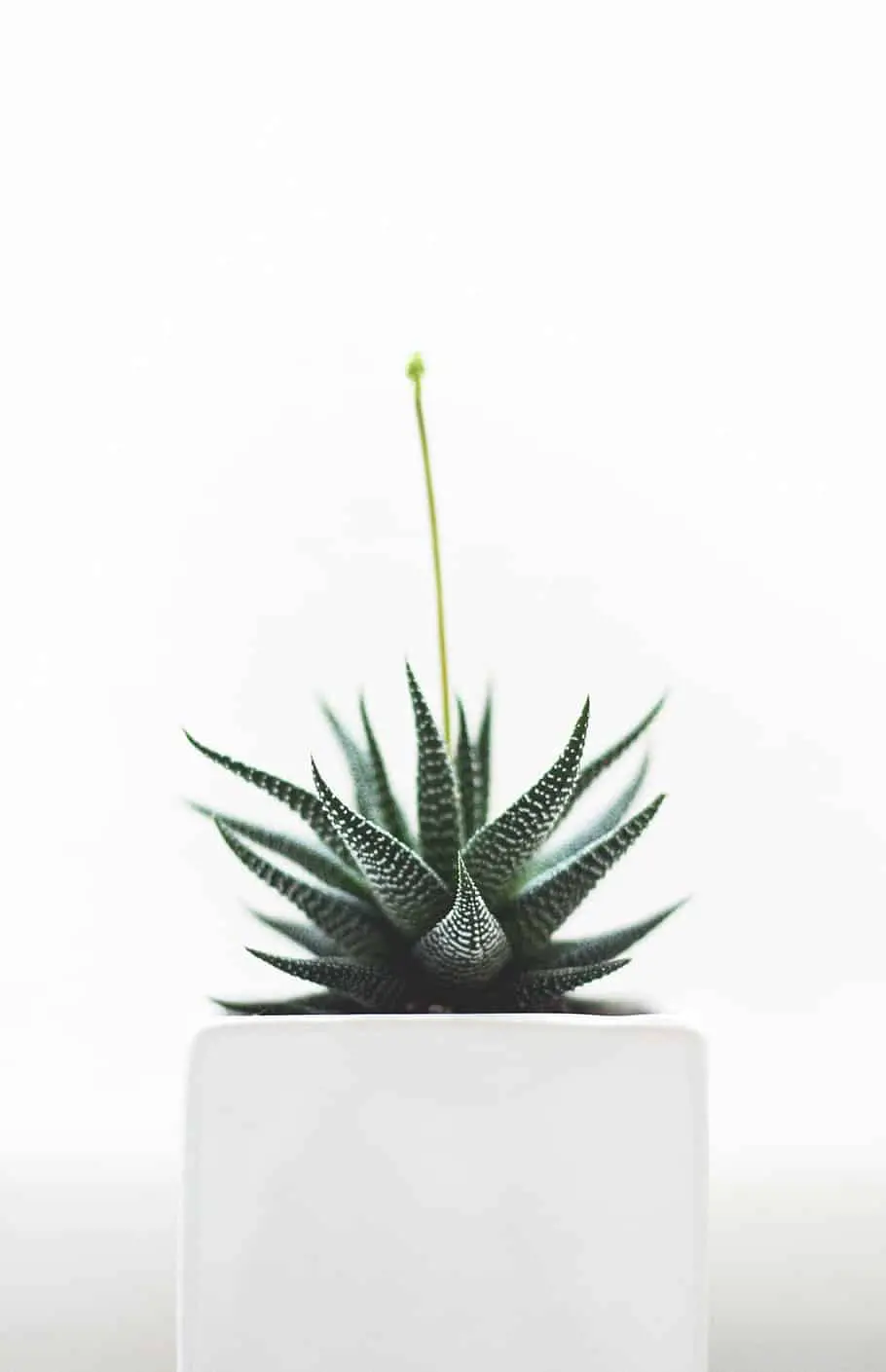
Haworthiopsis attenuata and Haworthiopsis fasciata are plants that are commonly referred to as Zebra Cactus or Zebra Plant. These plants are very similar, but leaves of the Haworthiopsis fasciata are smoother and a little narrower. In addition, Haworthiopsis attenuata tend to be a little taller.
You may see many articles calling these plants Haworthia attenuata or Haworthia fasciata. This is because recent studies have split the old Haworthia genus into three new genera, one of them being Haworthiopsis. The word Haworthiopsis means “like Haworthia.”
Despite their name, Zebra Cactus is actually not a cactus. These plants are often confused with Aloes or Gasteria plants. This is understandable because all of these plants belong to the Asphodelaceae (Aloe) family. Unlike Aloe or Gasteria, these plants are small and grow very slowly.
These plants make great bathroom plants because they look great in fun pots or containers. They are also tolerant of a variety of lighting conditions. However, they will turn light green, become “leggy,” or lose its compact shape if it does not get enough sunlight. Too much light will cause these plants to burn or lose their patterning.
Another great thing about this plant is that it requires very little watering. You only need to water Zebra Cactus about once every 4 to 6 weeks. These plants are extremely drought tolerant, but they are very sensitive to overwatering.

